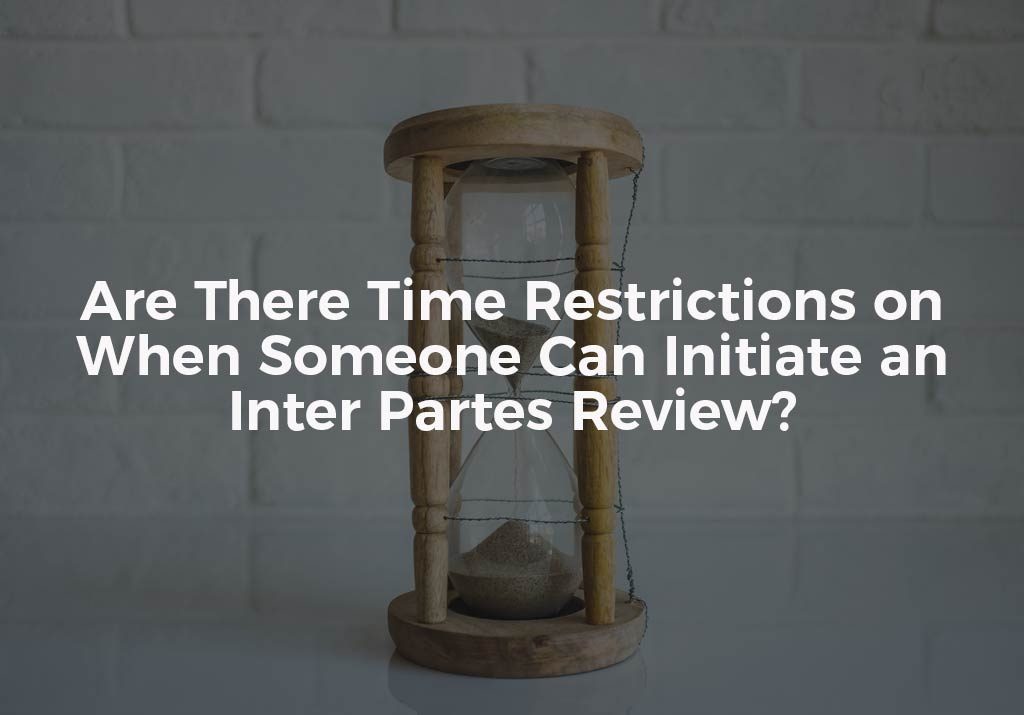Just like any other aspect of filing a patent application or a petition with the United States Patent and Trademark Office (USPTO), there are certain timing restrictions that apply to the process of petitioning the Patent Trial and Appeal Board of the USPTO to render a decision on the validity of an issued patent under Inter Partes Review (IPR) procedure. An IPR petition that does not comply with the specific timing requirements will not be considered by the PTAB. Additionally, if the filing time frames are not properly adhered to, petitions may risk losing out on their opportunity to use IPR review.
Time Restrictions On When An IPR Petition Can Be Filed
An IPR petition cannot be filed until after the contested patent has been issued by the USPTO. Additionally, petitioners must wait until the later of either nine months after the contested patent was issued, or until after the termination of a Post Grant Review proceeding, which is another form of post-allowance patent review before the PTAB that is available for only the first nine months after a patent issues.
For Those Accused Of Infringement, There Are Additional Time Restrictions
For those parties who stand accused of patent infringement in a concurrent litigation proceeding, IPR can be used to stay the infringement lawsuit until a decision can be rendered by the PTAB. However, to take advantage of the possible litigation stay, the IPR must be filed within one year of the initiation of the infringement action through service of process. Additionally, the IPR petition must be filed with the PTAB before a declaratory judgement regarding the validity of the contested patent is sought in the concurrent infringement litigation.
Timing Requirements to Terminate IPR Proceedings
Sometimes terminating IPR proceedings at the PTAB can be difficult and time sensitive as well. While the PTAB can let parties that are in agreement to terminate IPR proceedings after coming to a settlement arrangement, the PTAB doesn’t always let go so easily. Depending on how far along in the IPR review process the PTAB is at the time the IPR termination is requested by the parties, the PTAB might choose to render a decision in the case regardless of the settlement and regardless of the parties’ wishes. It is best to enter into settlement negotiations early in the IPR process so that the PTAB is more likely to authorize and grant the parties’ joint motion to terminate the IPR proceeding.
IPR Petitions Must Comply With Timing Requirements
Don’t get tripped up by the timing requirements associated with IPR petition filings. You don’t want to lose out on the strategic advantages offered by IPR due to missing a deadline. Its best to discuss IPR and the timing requirements that apply to your particular circumstances with a patent lawyer who has experience handling IPR matters. If you are considering filing an IPR petition with the USPTO, the IPR lawyers at The Rapacke Law Group are available to assist you. Do not hesitate to contact us today to schedule a free initial consultation with one of our attorneys.




